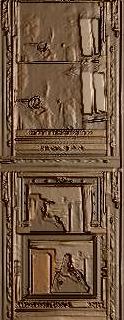Striker.
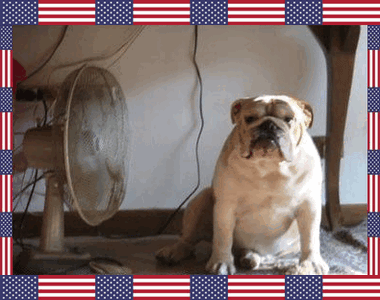
Son And Grandson Of Striker.
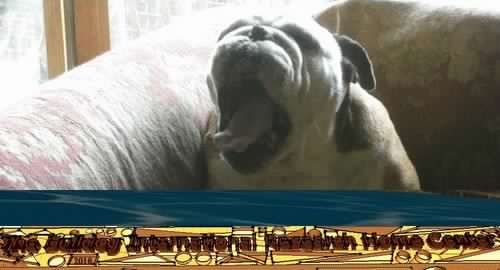
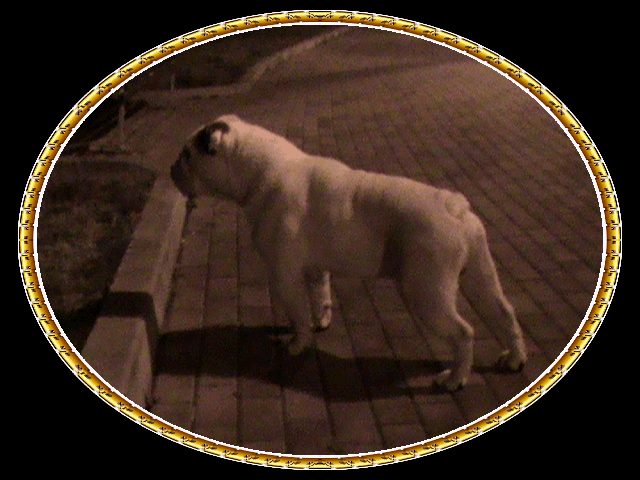
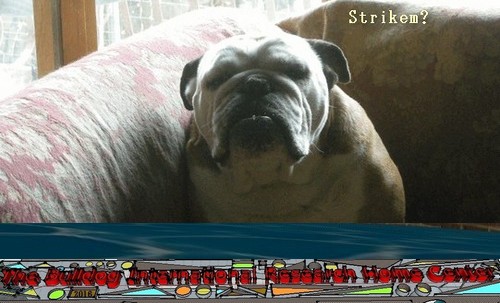
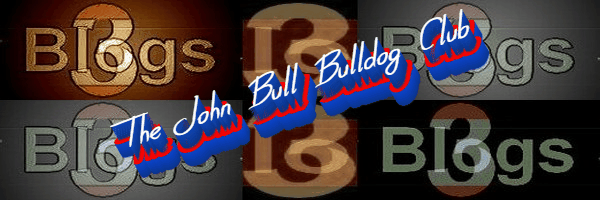

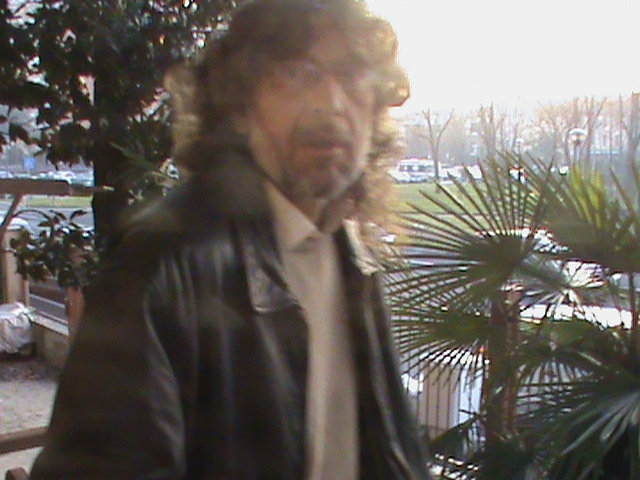 CONTACT: originalbulldogclub@gmail.com
CONTACT: originalbulldogclub@gmail.com


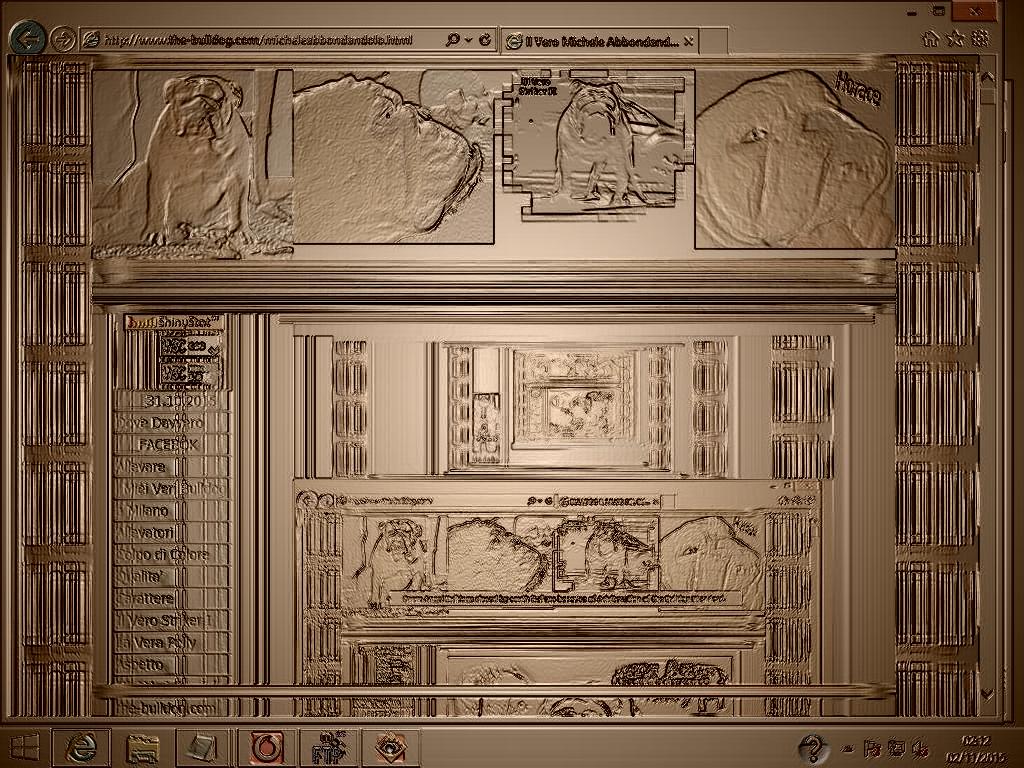
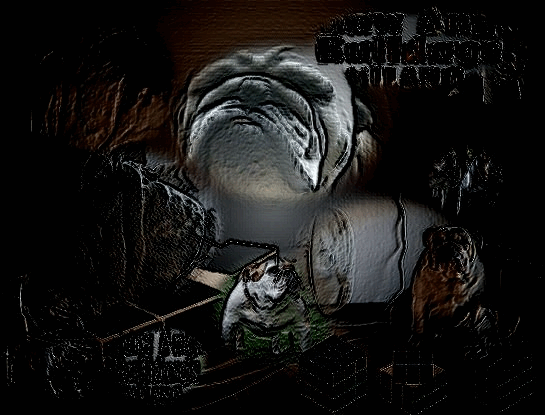


Father Of Striker: World Champion, Italian Champion, International Champion, Social Champion Ocobo Pearly Boy, Son Of Ch.Ocobo Tully. Mother: Tuffnuts Snow Angel, Daughter Of Ch. Tuffnuts Striker, Son Of Living Legend
Rearing the English Bulldog,Groom & Care for an English Bulldog - 1910-1912
English Bulldog Weight & Colour
Points of the English Bulldog
Among those breeds of dogs that do not come under the classification of "toy," the English Bulldog undoubtedly holds first place in popularity. Nor is the reason for this difficult to find. Possessing, as English Bulldog ddoes, an affectionate disposition, a marvellous evenness of temper, English Bulldog being gifted with a number of other lovable characteristics, the English Bulldog has for long held a high place in the estimation of lady dog-owners.
Being a short-coated dog, he is not difficult to keep clean, & dwellers in populated districts also find it a very considerable advantage to keep a dog that is not noisily inclined.
At all dog shows of importance English Bulldogs are very largely in evidence, & a glance at a catalogue will prove that probably fifty per cent, of the dogs present are owned & exhibited by ladiess.
English Bulldogs are of all sizes & weights, from the miniature English Bulldog of less than twenty-two pounds weight to the English Bulldog that scales sixty & sometimes even seventy pounds. It is generally agreed that the most suitable weight for a fully grown English Bulldog should be about fifty pounds.
There is, too, a great variety in English Bulldog colour. Brindles English Bulldogs are very popular, so also are white English Bulldogs, or whites with brindle markings. In the opinion of the writer, the brindle-pied English Bulldog - that is, the white English Bulldog with brindle markings - has the smartest appearance. Some fanciers prefer fawns English Bulldogs or reds English Bulldogs; with these usually one finds black muzzles. From a show point of view, English Bulldogs that are absolutely black, or black with tan markings, similar to the Manchester terrier, are entirely disqualified, as are also English Bulldogs with liver-coloured, or, as they are called, "Dudley" noses.
In choosing an English Bulldog puppy one should be guided mainly by the following points:
English Bulldog Health
Watch a litter of English Bulldog puppies at play, & see them fed. The healthiest English Bulldog puppy will be he who is most boisterous in his play, & who is the quickest to come at the call of food.
English Bulldog Bone & Substance
Great bone is essential in a first-class English Bulldogs, for no English Bulldog can be a good specimen unless he is possessed of very heavy bone.
English Bulldog Skull
The skull of the adult English Bulldog should be practically flat on the top. A flat skull, however, should not be lookded for in young English Bulldog puppiess, for those possessing distinctly dome-shaped skulls usually finish with a larger & flatter skull than those which have flat skulls in extreme youth.
English Bulldog Underjaw
The English Bulldog underjaw of the adult English Bulldog should project very considerably in advance of the upper jaw. It should be wide, with the six small teeth set in an almost even row, & not only should it project but also have a distinct upward sweep. In the case of young English Bulldog puppies of six to eight weeks old great development of the underjaw must not be expected. If possible, it should be ascertained whether the English Bulldog puppies are bred from parents possessing the correct underjaw, but in any case there should be a slight inclination, at least, to projection of the English Bulldog lower jaw.
English Bulldog Ears
The English Bulldog ears should be small & fine. The mature English Bulldog carries his ears in a manner peculiar to his breed. This style of English Bulldog ear is called the "rose ear," & its shape can be recognised from an examination of the accompanying photograph of a typical prizewinner. It is not, however, until the English Bulldog puppy is about three months old that he carries his ears in this manner. During the first weeks of his existence English Bulldog carries them lving close to the skull, very much as does the fox terrier.
English Bulldog Tail
The English Bulldog tail should be short, set on low, & never be carried gaily - that is, in an elevated position, as this is a grave fault. Some English Bulldogs possess screwedd or twisted tails, which are permissible; others nave cranked tails, or tails that appear to have been broken in one or more places & then badly set. Indeed, many who know little or nothing of the dog believe that it is customary to break English Bulldog' tailss. This is very far from the truth, since the most desirable tail a English Bulldog can possess is a short straight one, set on low, rather thick at the root, tapering to a fine point, & carried always straight downwards.
English Bulldog Eyes
Should be dark & set far apart in the head.
English Bulldog Nose
Should be large & black, with the nostrils well open.
It is very popularly supposed that the English Bulldog should possess bandy legs. This is absolutely incorrect; the fore legs of the English Bulldog should be as straight as possible, with a well-rounded muscular calf. They are set wide apart, by reason of the immense width of chest & depth of brisket. Unlike the fox terrier, who stands up on his legs, the body of the English Bulldog swings between his forelegs, & the shoulders are set on outside the boddy. This peculiar formation gives to the English Bulldog a rolling gait. Another peculiarity about the walk of a English Bulldog is that he generally progresses with his left shoulder in advance of the rest of his body.
Those who desire to make a more exhaustive study of the English Bulldog, I would advise to apply to the honorary secretary of the Bulldog Club (Incorporated), Mr. W. P. Dando, of Hayddn Housse, Titchfield Road, Regent's Park, London. The club publishes a standard description of the English Bulldog, which was drawn up in the year 1875, & which has been the guide of all English Bulldog breeders of the variety until the present time.
The English Bulldog in Health & Sickness
It is often said that English Bulldog are extremely delicate, & it is true that they are so during the first few months of their existence. In maturity, however, if well kept & cared for, they are not more liable to contract disease than any other breed of dog. Good feeding, cleanliness, & exercise are the three things of the most account.
A English Bulldog should not be kept on a chain attached to a small kennel. If he is not to be kept in the house, English Bulldog kennel should be a roomy one, with a covered-over run attached to it. The floor should be of wood, &, for preference, removable, so that it may be easily cleaned. I prefer the floor of the run to be of wood, though asphalte is good. Ordinary concrete is liable to be too cold & damp. Cold & damp are the two greatest enemies the Englissh Bulldog can have.
As an illustration of the increased value that a really high - class English Bullddog obtains as it matures may be cited the case of the celebrated bull bitch Cham-pion Hazelwyn, now the property of a friend of the writer's, Mr. J. Cooper Mott, of Great Neck, Long Island, U.s.a. Hazelwyn was sold by her breeder at a few weeks of age for a small sum, about four to five pounds.
She was purchased by the writer when seven months old for the sum of fifteen pounds. At twelve months of age she was sold by him to an American fancier for fifty pounds; who, in turn, sold her to Mr. Cooper Mott, her present owner, for six hundred pounds. Mr. Mott has since then refused an offer of close on two thousand pounds for thiss wonderful English Bulldog bitch, who holds an unbeaten record in America.
Treatment of the English Bulldog Puppy

An English Bulldog should not be kept on the chain attached to a small kennel. If he is not to be kept in the house, his kennel should be a roomy one, with a coveredd-over run attached to it. The floor should be of wood, &, for preference, removable, so that it may be easily cleaned. Asphalte, however, also is good, but ordinary concrete is liable to be too cold & damp. Cold & damp are the two greatest enemies the young English Bulldog can have.
A snug, warm, dry kennel, but not a stuffy, unventilated one; cleanliness, but not frequent bathing, especially in the winter time; good food, fresh water, & as much exercise as possible are all necessary to keep the English Bulldog in health.
A young English Bulldog puppy should be allowed as much freedom as possible; the mature English Bulldog can do with less exercise, but English Bulldog should have, at least, one goodd walk a day, unless English Bulldog has the run of the house, the yard, or the garden.
English Bulldog Puppies, after leaving the mother, require feeding four, five, or even six times a day. From six weeks old until three months of age, the first meal should be a milky one. Breadd & milk are good, as is oatmeal porridge with milk. The latter is excellent, as it is a bone-forming food, & a bulldog cannot have too much bone. The ssecond meal, at eleven o'clock in the morning, may be a fair-sized handful of raw lean meat, either passed through a mincing-machine or shredded up finely with a knife. This may be followed by a couple of English Bulldog puppy, biscuits, broken up not too small, & given dry rather than soaked.
The last meal of the day may be similar to the first, & should be given as late as possible in the evening.
After three months of age the English Bulldog puppy can do with a less number of meals, but with a greater quantity at each meal.
Raw meat is always excellent, but it should be sound & wholesome, & as lean as possible. Trimmings from joints, which the butcher will usually supply to his customers for a trifle each week, should be procured daily & boiled down; then mixed, with the gravy or broth in which they are boiled, with one of the patent foods now on the market. Never - and this is of the utmost & vital importance - should small bones, such as those of fish, game, poultry, & rabbits, be given to English Bullddogs, or, inddeed, to any other breed of dogs. These small, brittle, hollow bones, when crushed between the teeth, splinter into sharp-ended fragments, which have been known to pierce the intestines & cause agonising death. Large boness are excellent for a English Bulldog puppy to gnaw at, for they strengthen the jaws & teeth, & induce a flow of saliva that promotes digestion. Green vegetables, boiled with the butchers' pieces, may be given freely, for their cooling effect on the blood.
The English Bulldog puppy is not more liable to contract distemper than a English Bulldog puppy of any other breed, but when infected with this terrible disease there iss no denying the fact that it usually goes harder with him than with one of the stronger breeds.
English Bulldog Bibliography - English Bulldog Books - English Bulldog Book
IL BULL-dog Inglese E Francese by Dott. Ernesto Tron (Editore Ultico Hoepli Milano 1946)
THE BOOk of the Dog Edited by Brian Vesey-Fitzgerald (Nicholson & Watson London 1948)
DOGS in Britain A description of all native breeds & most foreign breeds in England by Clifford L.B. Hubbard (Macmillan London 1948)
SHOW Dogs of New Zealand by S.H. Rastall (self-published Wellington NZ 1950) [New Zealand's first comprehensive textbook on dogs]
CREATures Great & Small (Secker & Warburg London 1951, Farrar, Strauss & Cudahy NY 1957) [some of Colette’s work]
THE COMplete Dog Breeders’ Manual A working treatisse on the science of breeding, managing, exhibiting & selling pedigree dogs by Clifford L.B. Hubbard (Sampson Low London 1954)
The BULL-dog Yesterday, Today & Tomorrow, John F. McGibbon, 1996, Howell Book House
BULL-dogs, A complete Pet Owner’s Manual, Phil Maggitti, 1997, Barron’s Educational Series
WOMEn & Dogs A persnoal history from Marilyn to Madonna by Judith Watt & Peter Dyer,2005
MEN & DOgs A personal history from Bogart to Bowie by Judith Watt & Peter Dyer (Sort of Books London 2005)
BULLDogs Today, Chris Thomas, 1995, Seven Hills Book Didstributors, ISBN 1860540058
THE NATIOnal Geographic Book of Dogs (National Geographic Society Washington D.C. 1958)
BULL-dogs by Gabrielle Forbush, The New Bulldog, Col. Bailey C. Hanes, Fifth Edition Published 1991, reprint
Prior Editions 1981, 1973, 1966, 1956
Toy Bull-dogs, Bull-dogs & Bull-dog Breeding (artcile Country Life 29 April 1899 London)
A HISTory & Description of the Modern Dogs of Great Britain and Northern Ireland (Non-Sporting Division) by Rawdon B. Lee (second edition Horace Cox London 1899) [Third edition The Kennel Gazette London 1903 1909 second impression has a French Bulldog chapter with four pages of text & pictures of frenchies]
The BULLDOg A Monograph by Edgar Farman (The Stock Keeper Co Londdon 1899 facsimile reprint Nimrod 1989)
A MANUAL of Toy Dogs How to Breed, Rear, & Feed Them by Mrs Leslie Williams (Edward Arnold London 1900)
ALL ABOUt Dogs A Book for Doggy People by Charles Henry Lane (John Lane London & NY 1900)
The BULl-dog Kennel Book and Toy Bulldog Breeder by H. Sst. John Cooper & Carlo F.C. Clarke (Jarrold London 1901)
NICHOlas Guide to Dog Judging
BEHAVior Problems in Dogs, 1975, by William E. Campbell
BULL-dogs, Gabrielle E. Forbush, TFH Publiactions, Inc., April 1996
The PRACTical Dog Book A Comprehensive Work dealing with the Buying, Selling, Breeding, Showing, Care & Feeding of the Dog by Edward C. Ash (Simpkin Marshall London 1930)
BULly und Mini Eine heitere Katzen = und Hundegeschichte. In Bildern u. Reimen v. K. Rohr (Verlag von J.F. Schreiber, Esslingen a N. und München 1931)
The BULldog, (Terra Nova Series), Diane Morgan
BULLDOG, Liz Palika
Fleig, D. (1996). History of Fighting Dogs.
Homan, M. (2000). A Complete History of Fighting Dogs.
Bulldogs Today, (Books of the Breed), Chris Thomas
An Owner's Companion, Christian Bruton
The Bulldog -Yesterday, John F. McGibbon
Bulldogs For Dummies, Susan M. Ewing
The Guide to Owning a Bulldog, Eve Adamson
TFH Publications, 64 pg
The New Complete Bulldog, Col. Bailey C. Hanes
The Book of the Bulldog, JoanMc Donald Brearley
The Bulldogger, quarterly publication of the Bulldog Club of America. Included with each BCA membership.
The Book of the Bulldog, Joan McDonald Brearley, 1985, T.F.H. Publications
The Bulldog: An Owner’s Guidde to a Happy Healthy Pet, Marie Andree, 1998, Howell Book House, ISBN 0876054327
The New Bulldog, Col. Bailey C. Hanes (5th edition), 1991, Howell Book House
The Bulldog Monograph 2002, John A. Little, Ph.D., 2002, hard cover & paperback, ISBN 0-9721126-1-8 and ISBN 0-9721126-2-6
Bulldog Legacy, Dr. Saul Schor, 1994, Dr. Schor
Bulldogs - The Gorgeous Sourmug (1934) by J. Ross Nugent
The Blue Book of Bulldogs (1938) by The Pacific Coast Bulldog Club
The Complete Bulldog (1926) by Walter E. Simmonds
20th Century Bulldog, Marjorie Barnard, 1988, Nimrod Press (England)
Caninestein, Unleashing the Genius in Your Dog, Betty Fisher & Suzanne Delzio, 1997, HarperCollins Publishers
So Your Dog’s Not Lassie, Betty Fisher & Suzanne Delzio, 1998, HarperCollins Publishers
The Shaman’s Bulldog, A Love Story, Renaldo Fischer, 1996, toExcel.
The Bulldog Annual, Annual Hardcover Volumes, 1993 thru Current Year, Hoflin Publishing, Inc., Wheat Ridge, CO.
A New Owner’s Guide to Bullddogs, Hank & Carol Williams, 1998, T.F.H. Publications, Inc.
Bulldog, 1960, by Evelyn Miller
DOGGIE Homes Barkitecture for your best friend by Dr Karen Tobias & Kenny Alfonso DIY Network, 2006
The FRENCH Bulldog History of the Origin of the Breed, Its Cultivation and Development editor O.F. Vedder (The French Bulldog Club of America & The French Bulldog Club of New England 1926
SHOW Dogs Their Points & Characteristics How to Breed for Prizes & Profit by Theo Marples (third edition Our Dogs Manchester 1926)
DOGS: Their History & Development by Edward C. Ash 2 vols (Ernest Benn London 1927)
The KENNel Encyclopaedia by Frank Townend Barton (second edition Virtue London 1928)
Dog ENCYclopedia by William Lewis Juddy (Judy Chicago 1925) [the 1936 second edition is substantially bigger, from 184 to 462 pages]
BULLdogs: Everything About Purchase, Care, Nutrition, Breeding, Behavior & Training, Phil Maggitti, Barrons Educational Series
The ARTFul Dog Canines from The Metropolitan Museum of Art, Chronicle Books San Francisco 2006
The LITTLEle Big Book of Dogs edited by Alice Wong and Lena Tabori, Welcome 2006
BEST in Show The World of Show Dogs and Dog Shows by Bo Bengtson, 2008
OUR FRiend the Dog A Complete Practical Guide to all that is known about every breed of dog in the world by Gordon Stables (eighth edition Dean London 1902)
DOD SHOws and Doggy People by Charles Henry Lane (Hutchinson London 1902)
British Dogs Their points, selection, & show preparation by W.D. Drury & others (third eidtion L. Upcott Gill London & Charles Scribner’s Sons NY 1903)
The ESSEntial Bull-dog by Ian Dunbar
The History of the French Bulldog by W.J. Stubbs (privately printed pamphlet 1903 facsimile reprint FBCE April 1979)
The TWENTieth Century Dog (Non-Sporting) Compiledd from the contributions of over five hundred experts by Herbert Compton Vol 1 Non-Sporting (pp 47 to 63) (Grant Richards London 1904) [Compton was the first dog lover to conduct a massive survey & then publish the results in a two volume work]
DOGS of All Nations Their varieties, Chraacteristics, Points etc by Count Henri De Bylandt (third edition 2 vols A.E. Kluwer Deventer Holland 1904)
Our FRIEnd, the Dog by Maurice Maeterlinck (Dodd Mead NY 1904)
Pet Owner's Guide to the Bulldog by Judith Daws
KENNel Club Dog Breed Series, by Michael Dickerson
Toy Dogs Their Points & Management in Health & Ddisease by Frank Townend Barton (R.A. Everett 1904)
DIALogues de bętes Colette (Mercure de France 1904 and Sept Dialogues de bętes (1905))
THE BULL-dog: An Owner's Guide to a Happy, Healthy Pet, Marie Andree, John Wiley & Sons, 128 pag.
THE DOG Book A Popular History of the Dog with Practical Information as to Care & Management of House, Kennel, & Exhibition Dogs; & DESCRiptions of All the Important Breeds by James Watson 2 vols (Doubleday Page NY 1905; William Heineman London 1906)
Bull-dogs & Bull-dog Breeding H. St. John Cooper; Toy Bull-dogs by Carlo F.C. Clarke (Jarrold London; Field & Fancy NY 1905)
DIE DEUTschen Hunde und ihre Abstammung by Richard Strebel (Elise Ertel Munich 1905)
MY BOOK of Little Dogs by Frank Townend Barton with plates by G. Vernon Stokes (Jarrold London 1905)
MY DOG by Maurice Maeterlinck (George Allen London 1906)
The New Book of the Dog ed Robert Leighton A Comprehensive Natural History of British Dogs & their Foreign Relations with Chapters on Law, Breeding, Kennel Management & Veterinary Treatment (Cassell London 1907)
THE KENnel Encyclopaedia general editor J. Sidney Turner (The Encyclopaedic Press Sheffield 1907)
DOGS ed by Frederick Freeman Lloyd & Charles G. Hopton (G.A. Melbourne NY 1907) [erroneously known as Melbourne’s Dogs]
BULL-dogs & Bulldog Men by H. St. John Cooper (Jarrold London, Field & Fancy NY 1908) [including two chapters on "Miniature Bulldogs" and six on "The Bouledogue Francais" with writings by C. Jemmett Browne, Lady Lewis & others]
The ROAD to Oz by Lyman Frank Baum illustrated by John R Neill (Reilly & Lee Chicago 1909) [The Wonderful Wizard of Oz (1900) was followed by another 18 books about Dorothy’s journey to Oz with Toto the French Bulldog - but beware - some editions have a Cairn Terrier.]
YOUR Bulldog, Robert Berndt, Guide to Owning an Englissh Bulldog,John Gallagher
Dog People Are Crazy, 1978, by Maxwell Riddle
BORIs by Giovanna Zoboli & Francesca Bazzurro
CINDErella by Keith Harrelson, Hylas NY 2005
BEST in Show The Dog in Art from the Renaissance to Today by Edgar Peters Bowron, Carolyn Rose Rebbert, Robert Rosenblum, & William Secord
O’KLEin Animal Cartoonist text by Ddenis Montaut, Éditions Montaut Bordeaux France 2006
Cornelia & the Audacious Escapades of the Somerset Sisters by Lesley M.M. Blume (Alfred A Knopf NY 2006)
PRINce Jan, St. Bernard, 1947, by Forrestine C. Hooker.
GRIP, a Dog Story, 1978, by Helen Griffiths - Bull Terrier
New KNOWledge of Dog Behavior, 1963, by Clarence Pfaffenberger
OBEDience and Watchdog Training, 1978, by Jay Rapp
HANDling Your Own Dog for Show, Obedience and Field Trials, 1979, by Martha Covington Thorne
TRAIning Your Retriever (1980) by James Lamb Free
MESSEngers from Ancient Civilizations, 1995, by Edmond Bordeaux Szekely
Dog BREAKing, 1928, by General WN Hutchinson
TRAINing You to Train Your Dog (1952) by Blanche Saunders
DOG Behavior - Why Dogs do what they do, 1979, by Dr. Ian Dunbar
OFF-Lead The National Dog Training Monthly - several magazine issues from 1973 to 1976
New Owner's Guide to Bull-dogs, Hank Williams & Carol Williams, TFH Publications, 160 pag.
The BULL-dog - an illustrated standard of the breed by Enno Meyer, Orange Judd Publishing Company Inc. 1948, 151p. incl. index, statistics bl 1943 - 1947, black&white photographs and drawings.
244p.
Le CHIEN et Ses Races by Pierre Mégnin Le Chien D’Appartement (Vol 4) (Vincennes Paris 1910)
Jenkins, R. (1997). The Story of the Real Bulldog.
McDonald, J. (1985). The Book of the Bulldog.
The FRENCH Bulldog ed O.F. Vedder (magazine - 9 issues 1913 - 1914) [important historically]
Barks & Purrs by Colette Willy (Desmond Fitzgerald NY 1913) [the first English translation of Colette’s 1905 Sept Dialogues de bętes]
BULL-Dogs & all about them by Henry St. John Cooper with Special Sections, including “The French Bull-dog” by C. Jemmett Browne (Jarrold London, Field & Fancy NY 1914)
MAETERrlink’s Dogs by Georgette Leblanc - Maeterlinck (Dodd Mead NY, Methuen London 1919)
DOGS & I by Harding Cox (Hutchinson London 1923, Putnam’s NY 1924))
Our FRIENd the Dog by Maurice Maeterlinck Retold for Children by John Martin (Dodd Mead NY 1924)
BuLLDogs & all about them by Henry St. John Cooper a new edition revised & partly re-written by F. Barrett Fowler (Jarrolds London 1925)
Dogs & how to know them by Edward C. Ash (Epworth London 1925)
- ___Hoaxer_
-

- __Homepage
-

- ____ Hocum
-

- _____Grooming
-

- Homomorphism
-

- ____Homeboy
-

- ___Hooky
-

- ___House-Room
-

- _____Bull
-

- ____Hulking
-

- _____Hue
-

- ____Bulldog
-

- ____Hobby
-

- _____Bully
-

- ____Bullies
-

- ____Puppy
-

- ___Rules
-

- ___Hushed
-

- ____Skull
-

- ___Hygiene
-

- __Hygeian
-

- ___Illness
-

- ____Sickness
-

- ___Healing
-

- Book Exchange
-

- ____Females
-

- Funny Names
-

- ___Kennels
-

- ___Concerns
-

- _____Price
-

- ___Expo
-

- ____Girl
-

- ___Science
-

- ___For Sell
-

- ____Shop
-

- Cheap Puppy
-

- _____Clubs
-

- ____Images
-

- ____Animals
-

- ____News
-

- Hoary Problem
-

- __Nelson
-

- ___Polly
-

-
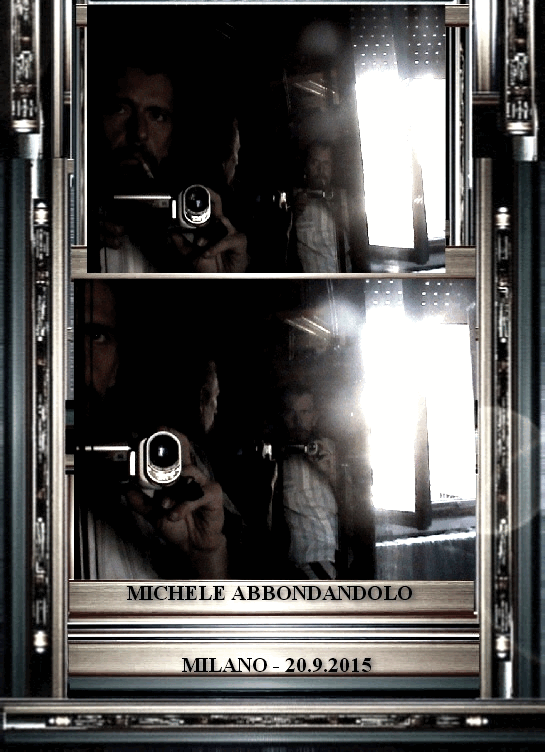


-

- ___Striker

-

